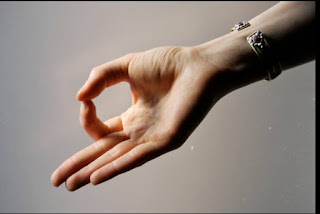Apana Vayu mudra

Apana Vayu mudra can be done in any position - sitting, standing, lying, while doing pranayama or even while walking. Benefits with Regular Practice: helps prevent heart attacks as well as their recurrence, lessen heart palpitations, relieve heaviness on heart helps relieve heartache, anxiety, panic, grief, sadness, overwhelm helps balance the three doshas (vata, pitta, kapha) as well as can help improve digestive fire as well as lung capacity It helps regulate and balance the air element within your body, Heals and treats you against any air imbalance diseases, Reduces extra air from stomach and body, Tightens and strengthens your chest, Relives you against chest pains, Builds immunity for your body against cold and cough, #How it works: Apana Vayu mudra includes gesture of the thumb, middle finger, ring finger, and index finger. This mudra increases the earth element with the fire element and decreases the air element in the body. ... We fold the index finger in this mudra which redu...
























